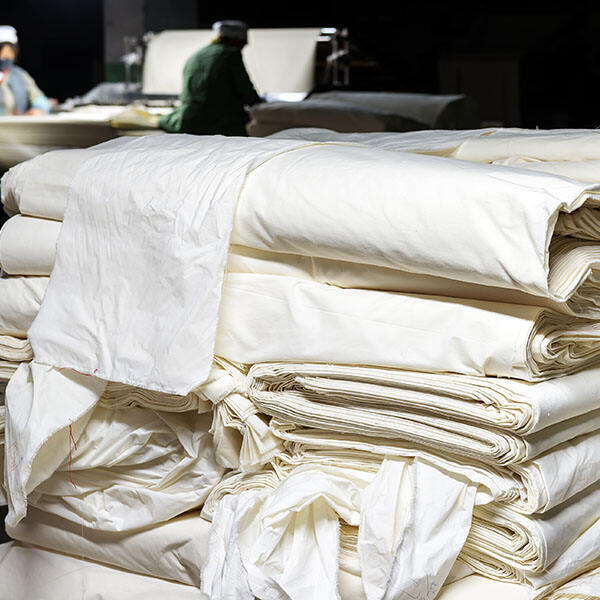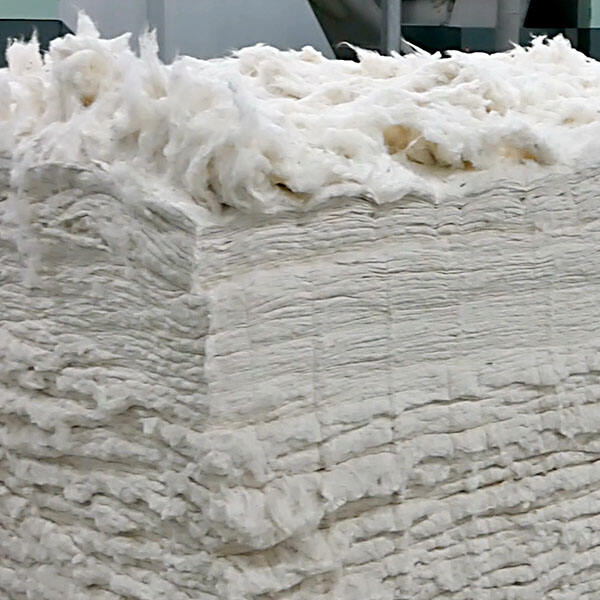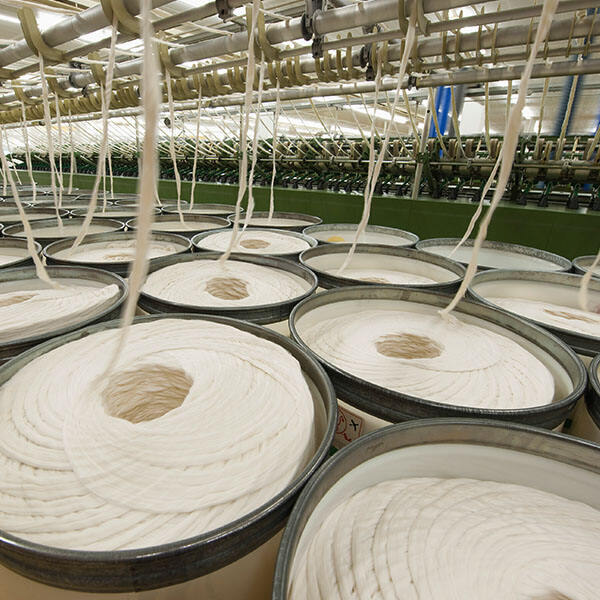مزايا الأقمشة القابلة للتحلل
تأثير بيئي منخفض: تتحلل الأقمشة القابلة للتحلل بسرعة عند التخلص منها، مما يقلل بشكل كبير من مستويات التلوث والنفايات في مكبات النفايات مقارنة بالأقمشة الاصطناعية، والتي تستغرق مئات السنين لتتحلل.
الاستدامة: تُصنع الأقمشة من مواد صديقة للبيئة مثل القطن العضوي أو القنب أو البوليمرات الحيوية، وعادةً ما تتطلب كمية أقل من المياه والطاقة والمواد الكيميائية في إنتاجها، مما يساعد على الحفاظ على الموارد الأساسية ويقلل الاعتماد على الوقود الأحفوري. خالية من السموم وآمنة للجلد: الأقمشة القابلة للتحلل لا تحتوي على مواد سامة وآمنة على البشرة، وهي خالية من المواد الكيميائية السامة الموجودة بشكل شائع في النسيج التقليدي، مما يجعلها أكثر أمانًا عند ارتدائها وأقل عرضة لتهيج الجلد أو التسبب بالحساسية. القطن والكتان ناعمان وقابلان للتنفس ويزيلان الرطوبة ويتمتعان بمتانة عالية، مما يجعلها متينة ومريحة. تقليل تلوث الميكروبلاستيك: لا تطلق الأقمشة القابلة للتحلل جزيئات ميكروبلاستيكية ضارة أثناء الغسيل، مما يساعد على حماية المجاري المائية والحياة البحرية من التلوث.
فوائد صحة التربة: تطلق الأقمشة القابلة للتحلل العضوي المواد العضوية والعناصر الغذائية مرة أخرى إلى التربة أثناء عملية التحلل البيولوجي، مما يساهم في خصوبة التربة ويدعم الممارسات الزراعية المستدامة. دعم الاقتصاد الدائري: يُشجّع استخدام الأقمشة القابلة للتحلل مبادئ مثل إعادة التدوير واستخدام المواد مرة أخرى وإعادة التصنيع، مما يسهم في ممارسات أكثر استدامة في صناعة الأزياء ويقلل من ثقافة الهدر والاستخدام لمرة واحدة.
تطبيقات الأقمشة القابلة للتحلل
تُستخدم الأقمشة القابلة للتحلل (مثل القطن العضوي والقنب وتانسيل والبوليستر القابل للتحلل وخلائط الأقمشة المركبة) على نطاق واسع في صناعات الملابس والمنسوجات نظرًا لخصائصها الامتصاصية (على سبيل المثال، الجفاف السريع) والنعومة والقوة والراحة. كما أنها توفر فوائد كبيرة في قطاع الرعاية الصحية، مثل هندسة الأنسجة وضمادات الجروح والخيوط الجراحية والغرسات وأنظمة توصيل الأدوية والمعدات الواقية الشخصية. فهي تتحلل بسهولة داخل الجسم والبيئة ويمكنها أيضًا تعزيز التئام الجروح. وقد استُبدلت الأقمشة والمركبات البوليمرية القابلة للتحلل البلاستيكيات الاصطناعية في التعبئة والتغليف والمنتجات ذات الاستخدام الواحد، مثل المناديل والمرشحات ومواد التغليف. وسمحت الابتكارات مثل الأقمشة غير المنسوجة المقاومة للهبء والقابلة للتحلل والقوية باستخدامها في مرشحات المناديل وتغليف المنتجات. وتتمتع الأقمشة المصنوعة من ألياف طبيعية مثل القنب والجوت والخيزران والقطن بتطبيقات صناعية واسعة، بما في ذلك تنجيد السيارات ووسائط الترشيح والمنسوجات الأرضية وسجاد العزل المقوى وسجاد المصانع حيث تكون القابلية للتحلل والقوة من العوامل الرئيسية. ومن منظور بيئي وزراعي
تطلق الأقمشة القابلة للتحلل العضوي مادة عضوية وعناصر غذائية أثناء تحللها، مما يحسن صحة التربة.

تحديات الأقمشة القابلة للتحلل
المواد الخام الموثوقة للأنسجة القابلة للتحلل البيولوجي، مثل القطن العضوي والقنب والكتان، وكذلك المواد المبتكرة مثل الخزف أو ألياف الطحالب، مكلفة في الحصول عليها ومحدود في المعروض. استخدام المبيدات الحشرية يتطلب استهلاكًا كبيرًا للمياه، والانتقال إلى الزراعة العضوية أو التجديدية يمكن أن يكون مكلفًا ويستغرق وقتًا طويلاً. إن تصنيع الأقمشة القابلة للتحلل البيولوجي يتطلب بنية تحتية واستثمارات جديدة لاتخاذ عمليات صديقة للبيئة. تستخدم المعالجات التقليدية للمنسوجات مواد كيميائية قاسية تعيق التحلل الحيوي، وقلة مرافق الإنتاج المتخصصة على نطاق واسع تحد من القدرة الإنتاجية. النسيج القابل للتحلل البيولوجي مكلف في الإنتاج، والقدرة المحدودة على الإنتاج لم تصل بعد إلى وفورات الحجم. هذه الأقمشة أغلى من الأقمشة الاصطناعية في السوق، مما يؤدي إلى تفضيل المستهلكين للصناعات الاصطناعية. النسيج الاصطناعي أكثر استدامة من الأقمشة القابلة للتحلل البيولوجي، والتي تتجاعد وتتلاشى وتتآكل بسرعة أكبر، مما يقلل من عمر الملابس. تحقيق مزيد من المتانة دون المساس بالتحلل الحيوي لا يزال تحدياً علمياً وتكنولوجياً شديداً. يمكن أن تواجه سلسلة توريد المنسوجات تحديات أخلاقية معقدة، بما في ذلك "غسيل الأخضر"الإعلانات الخاطئة عن قابلية المنتجات للتحلل الحيوي. التحلل الحيوي الكامل والآمن غير محتمل بسبب الظروف البيئية والصبغات أو التشطيبات التي يمكن أن تعيق التحلل الحيوي أو إطلاق السموم. معايير الشهادة للتحلل الحيوي، مثل OK Compost، ليست مقبولة على نطاق واسع. يتطلب التدهور الحيوي تطوير البنية التحتية، وسلاسل التوريد الموثوق بها، والاستثمارات التي قد لا تكون نضجت تماماً ومقبولة على نطاق واسع.
تأثير الأقمشة القابلة للتحلل على البيئة
تقلل الأقمشة القابلة للتحلل من النفايات والملوثات النسيجية بشكل ملحوظ مقارنةً بالمواد الاصطناعية. فهي تتحلل بشكل طبيعي في الظروف الرطبة مثل التربة أو مكبات النفايات، بينما تستغرق المواد الاصطناعية عقوداً أو حتى قروناً لتتحلل وتنفصل إلى ميكروبلاستيك. علاوةً على ذلك، فإن إنتاج الألياف القابلة للتحلل يستخدم عادةً كمية أقل من المواد الكيميائية الضارة، ويستهلك طاقةً وماءً أقل، ويحافظ على الموارد الطبيعية. كما تساهم الأقمشة القابلة للتحلل في تقليل تلوث الميكروبلاستيك في المجاري المائية، حيث تطلق الأقمشة الاصطناعية ميكروبلاستيك أثناء الغسيل، مما قد يضر الحياة المائية ويصل إلى السلسلة الغذائية. ويمكن للأقمشة القابلة للتحلل أن تقلل الاعتماد على الوقود الأحفوري وانبعاثات الغازات الدفيئة؛ كما تساهم طرق الإنتاج المغلقة مثل مادة تينسيل في تقليل البصمة الكربونية.




 أخبار ساخنة
أخبار ساخنة